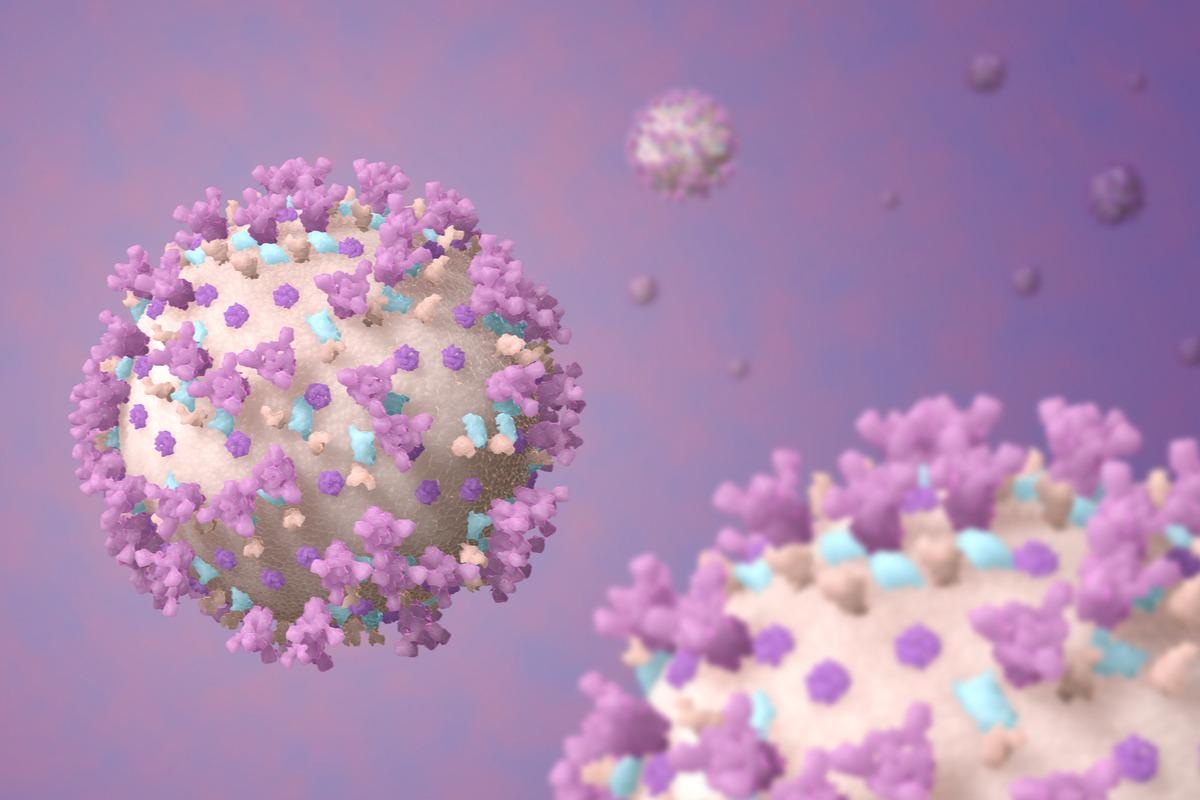The evolution of severe acute respiratory syndrome coronavirus-2 (SARS-CoV-2), the causal agent of the ongoing coronavirus disease 2019 (COVID-19) pandemic, has led to the emergence of many new variants. These variants are different from the original SARS-CoV-2 strain, which was first reported in China in 2019. Some of the emerged variants have been classified as variants of concern (VOC), as they are capable of evading the immune response induced after COVID-19 infection or immunization.
 Study: Evidence of increased Cathepsin B/L and decreased TMPRSS2 usage for cell entry by the SARS-CoV-2 Omicron variant. Image Credit: MedMoMedia/Shutterstock
Study: Evidence of increased Cathepsin B/L and decreased TMPRSS2 usage for cell entry by the SARS-CoV-2 Omicron variant. Image Credit: MedMoMedia/Shutterstock
Background

 *Important notice: bioRxiv publishes preliminary scientific reports that are not peer-reviewed and, therefore, should not be regarded as conclusive, guide clinical practice/health-related behavior, or treated as established information.
*Important notice: bioRxiv publishes preliminary scientific reports that are not peer-reviewed and, therefore, should not be regarded as conclusive, guide clinical practice/health-related behavior, or treated as established information.
The newly emerged SARS-CoV-2 Omicron variant has been classified as a VOC and has become the dominant circulating strain in many countries. It contains thirty-seven mutations in the spike (S) protein, compared to the original SARS-CoV-2 strain, and can evade the immune protection generated via vaccination or natural infection. Earlier studies showed that the original SARS-CoV-2 strain exhibited broad cell tropism.
Recent studies have shown that due to a high number of mutations, Omicron exhibits altered cell tropism and mode of entry compared to other SARS-CoV-2 variants. For instance, SARS-CoV-2 pseudotyped virus-containing either the B.1 or the Delta variant spike protein exhibited greater entry efficiency than the Omicron pseudotyped virus, in Caco-2 (human colon cells) and Calu-3 (human lung cells) cells.
However, this is not the case in other cell types. For example, the Omicron pseudotyped virus can invade Vero (kidney cells of African green monkey) and 293T (human kidney cells) cells more efficiently than the other variants. Similar results were reported by studies that performed live SARS-CoV-2 virus infection assays. These studies revealed that, in Calu-3 cells, the Delta variant infection spread significantly faster than the Omicron variant.
A new study
A new study published on the bioRxiv* preprint server analyzed new data on the Omicron variant and indicated the altered cell entry pathways compared to other variants. This study used a mathematical model to quantify the extent of the different usage of altered entry pathways by the Omicron variant.
Previous studies have shown that the Omicron spike protein binds soluble human ACE2 strongly. Researchers observed that the reduction in spike protein density decreased the entry efficiency of Omicron. They explained that after SARS-CoV-2 binds to the ACE2 of the host, a successful entry requires cleaving of the spike protein into two subunits by either host proteases by a transmembrane serine protease (TMPRSS2) or cysteine proteases Cathepsin B and Cathepsin L (Cathepsin B/L) in the endosomal vesicles.
Prior studies have indicated that both the proteases function independently to enable SARS-CoV-2 entry to host cells, following two different pathways. In this new study, researchers evaluated SARS-CoV-2 pseudotyped virus infection of several cell lines using a mathematical model of SARS-CoV-2 entry.
They reported differential usage of TMPRSS2 and Cathepsin B/L entry pathways, between the SARS-CoV-2 original strain and the Omicron variant, across all cell lines. For instance, Vero cells largely used the Cathepsin B/L pathway for virus entry, whereas Calu-3 cells permit entry through the TMPRSS2 pathway. The original SARS-CoV-2 strain has exhibited its ability to utilize both pathways. The preferred pathways might be linked with the level of expression of the two proteases.
Main findings
The authors of this study hypothesized that the Omicron variant might use TMPRSS2 and Cathepsin B/L entry pathways differently from the original or other SARS-CoV-2 variants, which might lead to its differential cell tropism. They tested this theory and observed a correlation between the Omicron virus entry efficiency and the relative usage of the two entry pathways by the original strain.
Scientists reported that the original strain predominantly used the TMPRSS2 entry pathway to enter both Calu-3 and Caco-2 cells. However, among viral variants, the efficiency of entering these cell lines using the TMPRSS2 entry pathway was much less in Omicron pseudotyped virus than B.1 and delta strains. Scientists revealed that the Omicron cells enter more efficiently in cells where the Cathepsin B/L entry pathway usage by the original strain was dominant.
These findings imply that compared to other SARS-CoV-2 variants, Omicron variant entry is relatively less effective via the TMPRSS2 pathway and more effective through the Cathepsin B/L pathway. This observation is consistent with another study that reported that camostat mesylate, a TMPRSS2 inhibitor, was less efficient in blocking the live Omicron variant than the Delta variant in VeroE6 cells. In contrast, Cathepsin B/L inhibitors were more efficient against the Omicron variant. The mathematical model provided the synergy between TMPRSS2 and Cathepsin B/L inhibitors against SARS-CoV-2 infection.
Conclusion
The authors revealed that the altered cell tropism associated with the Omicron variant is linked to increased efficiency of Cathepsin B/L usage and reduced efficiency of TMPRSS2 usage. This study revealed that the increased mean susceptibility of the cell population to virus entry is related to the utilization of both pathways. Scientists stated that as the Omicron variant’s preference for the TMPRSS2 pathway is reduced and not entirely eliminated, combination treatment with TMPRSS2 and Cathepsin B/L inhibitors may be a better treatment strategy.

 *Important notice: bioRxiv publishes preliminary scientific reports that are not peer-reviewed and, therefore, should not be regarded as conclusive, guide clinical practice/health-related behavior, or treated as established information.
*Important notice: bioRxiv publishes preliminary scientific reports that are not peer-reviewed and, therefore, should not be regarded as conclusive, guide clinical practice/health-related behavior, or treated as established information.